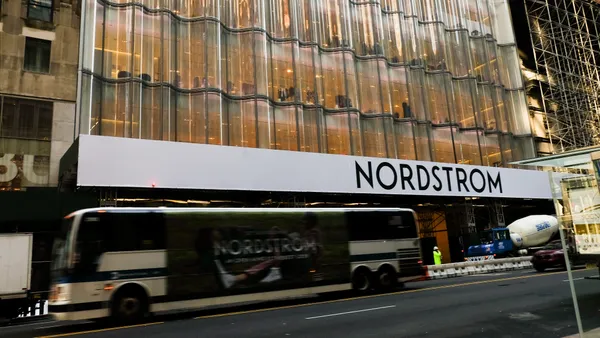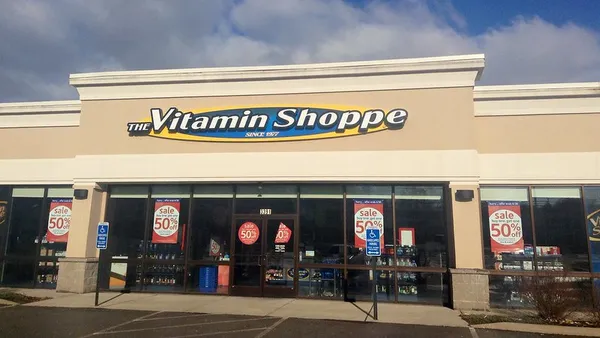Dive Brief:
-
Amazon Prime members will begin receiving special discounts in all Whole Foods Market and Whole Foods 365 stores starting Wednesday, according to a company statement. Perks include 10% off already discounted products — a program that launched earlier this spring in Florida — deeper discounts on popular items and 5% cash back when members use their Visa rewards cards in store.
-
Customers who have their groceries delivered through Prime Now will also have access to these discounts online. Prime Now is currently available in Atlanta, Austin, Baltimore, Boston, Cincinnati, Dallas, Denver, Los Angeles, Philadelphia, Richmond, Sacramento, San Diego, San Francisco and Virginia Beach. Whole Foods delivery through Prime Now will continue to expand through 2018.
-
Whole Foods customers can save by either signing into their Amazon Prime account through the Whole Foods Market app and scanning the code at checkout, or by entering a phone number. This weeks discounts include organic red cherries for $3.99 per pound, organic yellow peaches for $1.99 per pound and 25% off bulk items including nuts and dried fruit.
Dive Insight:
Amazon’s recent emphasis on Prime discounts at Whole Foods pushes members to shop at the store. It also gives Whole Foods customers an incentive to get a Prime membership — benefiting Amazon either way. Approximately 20 to 30 million Prime members don’t actively shop at their nearest Whole Foods, RBC tech analyst Mark Mahaney told CNBC. He told the network it "could double, theoretically, Whole Foods overall customer base over a five to 10 year period just by giving financial incentives to prime customers. That’s the synergy they are now pulling from this deal."
Other supermarkets have been bracing for this alliance since August, when Amazon closed the deal to acquire Whole Foods for $13.7 billion. It was apparent this sort of tie-up would happen soon when Whole Foods emailed customers in mid-April to let them know its rewards and benefits would end May 2. The email said to "stay tuned for additional announcements for Amazon Prime members." Amazon CEO Jeff Bezos said in a mid-April letter to shareholders that the company has started "to recognize Prime members at the point of sale and look[s] forward to offering more Prime benefits to Whole Foods shoppers once that work is completed."
Brick-and-mortar shopping at Whole Foods has been booming. After the acquisition, Whole Foods saw an average increase in customer traffic of 25%. Part of that has come from the e-tailer's price cuts — up to 43% on some items. Natural food manufacturers have said their sales there have soared.
Amazon's online business has benefited from Whole Foods. In April, the online giant reported earnings of $1.6 billion. Revenues increased 43% to $51 billion, $4.2 billion of which came from Whole Foods. After the acquisition, 2,000 of Whole Foods' 365 private-label products became available on Amazon, and almost all sold out — equaling more than $500,000 in sales in the first week.
This recent partnership can take the retail company much higher. And the opportunities are even greater. Amazon may want to include the grocer in its Prime Day — rumored to be July 16 — as well. The retailer said business rose 60% year-over-year after last year’s Prime Day. This year’s could be an even bigger hit if Whole Foods were in the game.
Amazon is notorious for being a threat to every industry. Through its history, the e-tailer has revolutionized bookstores, electronics, department stores, food delivery services, healthcare companies, finance and pharmacies. Over time, the tech giant has expanded its consumer data collection abilities. Far-reaching data and convenience have made the difference. In 2017, Amazon made up 44% of all U.S. online retail sales, according to One Click Retail. And one thing is clear: Amazon is nowhere near finished with disrupting grocery.













